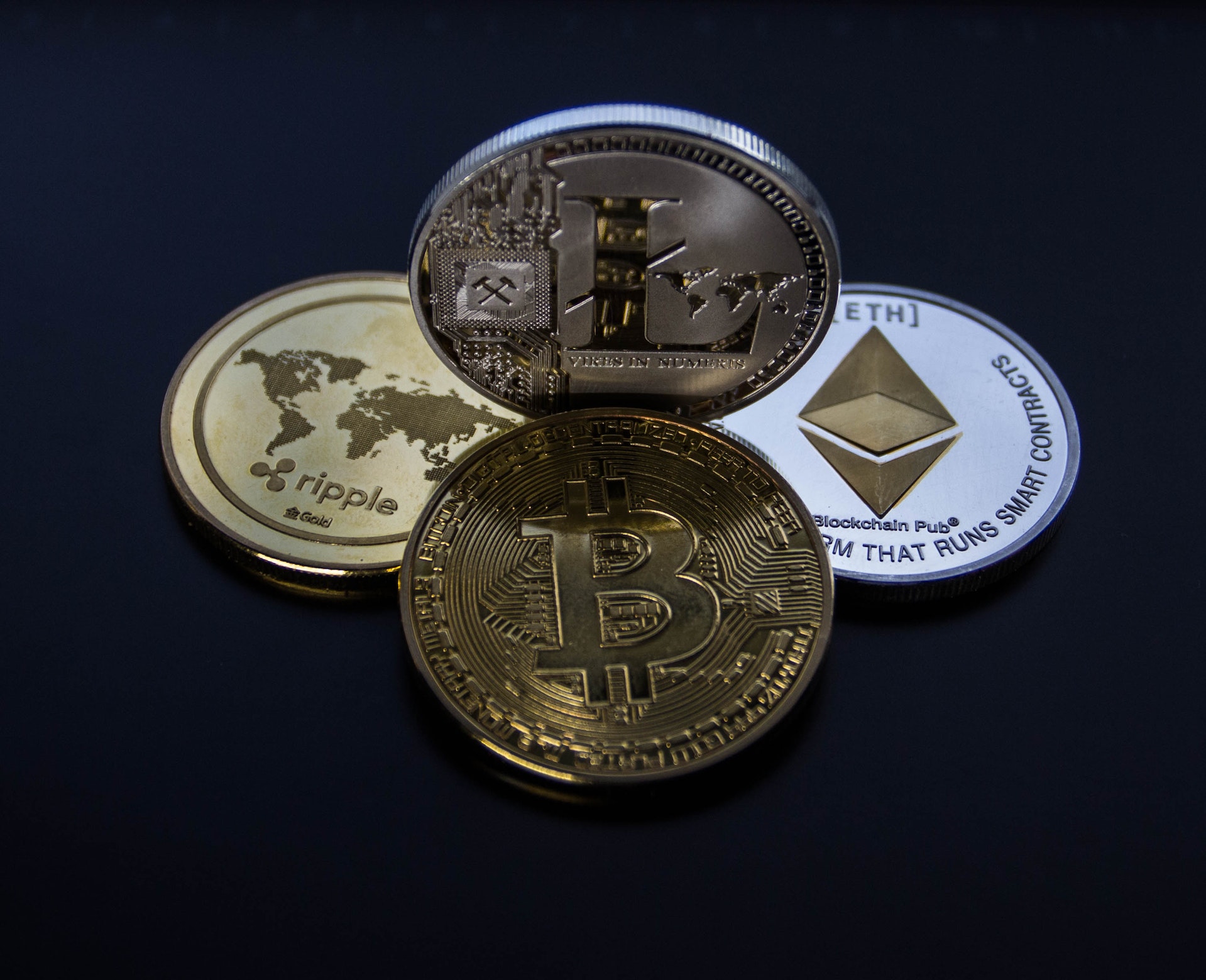I. Introduction
Cryptocurrency Revolution: A Brief Overview
The world of finance has undergone a revolutionary transformation with the advent of cryptocurrencies. While Bitcoin, the pioneer, remains a household name, an entire ecosystem of digital assets, known as altcoins, has emerged. In this comprehensive article, we’ll delve into the exciting realm of altcoins and unravel how they differ from the original cryptocurrency, Bitcoin.
Cryptocurrencies have disrupted traditional financial systems, offering decentralized, borderless, and censorship-resistant alternatives. The first cryptocurrency, Bitcoin, was introduced in 2009 by an anonymous entity or group using the pseudonym Satoshi Nakamoto. It was created to address the shortcomings of conventional fiat currencies and centralized financial systems. Bitcoin operates on a decentralized ledger called the blockchain, which records all transactions transparently, eliminating the need for intermediaries like banks.
II. Bitcoin: The Pioneer
A. What is Bitcoin?
Bitcoin’s Origin and Genesis
Bitcoin’s origin story is shrouded in mystery, with Satoshi Nakamoto’s true identity remaining unknown to this day. Nevertheless, its impact on the world of finance is undeniable. Satoshi’s whitepaper, titled “Bitcoin: A Peer-to-Peer Electronic Cash System,” outlined the principles and mechanisms of this groundbreaking cryptocurrency.
Bitcoin’s blockchain, the underlying technology, is a distributed ledger that records all transactions across a network of computers. It relies on a consensus mechanism known as proof of work (PoW), where miners solve complex mathematical puzzles to validate and add new transactions to the blockchain. This ensures security and immutability, making it virtually impossible to alter past transactions.
B. Bitcoin’s Dominance
Market Capitalization
Bitcoin’s prominence extends beyond its technological significance; it boasts the largest market capitalization among all cryptocurrencies. This means it has the highest total value in the cryptocurrency market. Market capitalization is calculated by multiplying the current price of one Bitcoin by the total number of Bitcoins in circulation.
One of the key reasons for Bitcoin’s dominance in the market is its perceived role as “digital gold.” Like physical gold, Bitcoin is considered a store of value, a hedge against inflation, and a safe haven asset during economic uncertainties. Investors and institutions often allocate a portion of their portfolios to Bitcoin as a means of diversifying and protecting their wealth.
III. Altcoins: The Diverse Cryptocurrency Universe
A. Defining Altcoins
What Are Altcoins?
Altcoins, a portmanteau of “alternative” and “coins,” represent any cryptocurrency other than Bitcoin. While Bitcoin laid the foundation for decentralized digital currencies, altcoins took the concept further by exploring various technologies, use cases, and market niches.
The term “altcoin” encompasses a wide range of cryptocurrencies, each with its unique features and objectives. These digital assets have diversified the crypto landscape, offering alternatives to Bitcoin’s core concept of a peer-to-peer digital currency.
B. The Genesis of Altcoins
Early Altcoins and Their Objectives
The emergence of altcoins can be traced back to the early days of Bitcoin. As the cryptocurrency community grew, developers and enthusiasts began to experiment with Bitcoin’s source code to create new cryptocurrencies. Some altcoins were created as forks, splitting from Bitcoin’s blockchain to pursue specific goals and address perceived limitations.
Litecoin, created by Charlie Lee in 2011, was one of the first altcoins and aimed to provide faster transaction confirmation times compared to Bitcoin. It achieved this by using a different hashing algorithm. Ripple (XRP), developed in 2012, targeted the financial industry with its focus on cross-border payments and settlements, aiming to revolutionize the way money is transferred globally.
These early altcoins set the stage for a diverse ecosystem, with each project attempting to carve out its unique niche within the broader cryptocurrency market.
IV. Key Differences Between Altcoins and Bitcoin
A. Technology and Blockchain Variations
Proof of Work vs. Proof of Stake
One of the most significant distinctions between altcoins and Bitcoin lies in their consensus mechanisms. Bitcoin relies on the proof-of-work (PoW) mechanism, where miners compete to solve complex mathematical puzzles to validate transactions and create new blocks. This process requires substantial computational power and energy consumption.
In contrast, many altcoins have explored alternative consensus mechanisms, with proof of stake (PoS) being the most prominent. In a PoS system, validators are chosen to create new blocks and validate transactions based on the number of coins they “stake” as collateral. This reduces the energy consumption associated with PoW and enhances scalability, making PoS altcoins an environmentally friendlier option.
B. Purpose and Use Cases
Smart Contracts and dApps
While Bitcoin primarily serves as a digital currency, many altcoins have expanded their utility by incorporating smart contract functionality. Smart contracts are self-executing agreements with the terms of the contract directly written into code. They automatically execute when predefined conditions are met, eliminating the need for intermediaries in various contractual agreements.
Ethereum, one of the most prominent altcoins, introduced the concept of smart contracts, enabling developers to build decentralized applications (dApps) on its platform. These dApps range from decentralized finance (DeFi) applications, which provide financial services without traditional banks, to non-fungible tokens (NFTs), which represent ownership of unique digital assets.
The integration of smart contracts and dApps into altcoin platforms has opened up a world of possibilities beyond simple peer-to-peer transactions, making altcoins more versatile and adaptable to various use cases.
V. Altcoins and Market Dynamics
A. Market Capitalization and Ranking
Top Altcoins by Market Cap
While Bitcoin remains the dominant force in the cryptocurrency market, altcoins have steadily gained traction over the years. Several altcoins, including Ethereum, Binance Coin, and Cardano, have emerged as significant players, ranking among the top cryptocurrencies by market capitalization.
Market capitalization reflects the total value of a cryptocurrency and is calculated by multiplying its current price by the total number of coins in circulation. Altcoins have collectively accumulated a substantial market capitalization, indicating a growing interest in their unique features and applications.
B. Volatility and Risk
Altcoin Volatility vs. Bitcoin
Investing in altcoins comes with both opportunities and challenges, and one of the notable characteristics of altcoins is their higher volatility compared to Bitcoin. Volatility refers to the degree of price fluctuation within a given period.
Altcoins often exhibit more significant price swings than Bitcoin due to their relatively lower market capitalization and liquidity. Factors such as market sentiment, technological developments, and regulatory announcements can trigger rapid and sometimes unpredictable price changes.
While this volatility can provide opportunities for traders seeking short-term gains, it also poses increased risk. Investors should carefully consider their risk tolerance and investment strategies when exploring the world of altcoins.
VI. Investing in Altcoins: Opportunities and Challenges
A. Altcoin Investment Strategies
Diversification Benefits
Investors in the cryptocurrency space often use altcoins as a means of diversifying their portfolios. Diversification involves spreading investments across various assets to reduce the risk associated with a single investment.
By holding a mix of cryptocurrencies, including Bitcoin and select altcoins, investors can potentially benefit from different market dynamics. While Bitcoin is often considered a store of value, altcoins may offer growth opportunities and unique use cases. Diversification helps mitigate the risk of holding all investments in a single asset class.
It’s essential to tailor your diversification strategy to align with your investment goals, risk tolerance, and time horizon. Long-term investors may choose to allocate a
portion of their portfolio to altcoins, while traders may leverage short-term price movements for profit.
B. Risks and Considerations
Altcoin Scams and Frauds
While the altcoin market presents opportunities for investors and innovators, it’s not without its challenges and risks. One notable concern is the prevalence of scams and fraudulent projects. The relatively low barrier to entry in the cryptocurrency space has allowed unscrupulous actors to launch deceptive initial coin offerings (ICOs) and projects that promise high returns but deliver little or nothing of value.
Investors should exercise caution and conduct thorough due diligence before investing in any altcoin project. Research the team behind the project, its technology, and its use case. Be wary of projects that make exaggerated claims or lack transparency.
Regulatory and Legal Risks
Altcoins, like Bitcoin, operate in a legal and regulatory gray area in many jurisdictions. Governments and regulatory bodies around the world are actively exploring how to classify and regulate cryptocurrencies. Depending on the region, the regulatory landscape for altcoins can vary significantly.
Investors and users of altcoins should stay informed about the regulatory environment in their respective countries and comply with any legal requirements. Failure to do so could result in legal consequences or financial penalties.
VII. Altcoins and Innovation
A. Innovation Beyond Bitcoin
Altcoins as Laboratories of Innovation
Altcoins have become hotbeds of innovation, pushing the boundaries of what blockchain technology can achieve. While Bitcoin serves as a foundational digital currency, altcoins have explored additional functionalities and features, contributing to the broader blockchain ecosystem.
Ethereum, in particular, stands out as a pioneer in this regard. Its introduction of smart contracts and the Ethereum Virtual Machine (EVM) enabled developers to create decentralized applications (dApps) that automate various processes, from financial services to gaming and art. This innovation has given rise to the DeFi (Decentralized Finance) movement, where users can access financial services without relying on traditional banks.
Similarly, altcoins like Polkadot, Cardano, and Solana are experimenting with different consensus mechanisms, scalability solutions, and interoperability protocols, driving innovation and competition in the blockchain space.
B. Prominent Altcoin Projects
Ethereum and Smart Contracts
Ethereum, often regarded as Bitcoin’s most significant rival, has played a pivotal role in shaping the altcoin landscape. Its introduction of smart contracts and decentralized applications (dApps) has transformed the way developers and businesses interact with blockchain technology.
Smart contracts are self-executing agreements with predefined rules and conditions written in code. They automatically enforce the terms of an agreement when specified conditions are met, eliminating the need for intermediaries and reducing the risk of fraud.
Ethereum’s decentralized nature and support for smart contracts have led to the creation of a wide range of dApps, each catering to various industries and use cases. DeFi platforms offer lending, borrowing, and trading of digital assets, NFT marketplaces facilitate the creation and trading of unique digital collectibles, and blockchain-based games provide immersive gaming experiences.
These applications have propelled Ethereum into the spotlight and underscored the potential of altcoins to drive innovation and disrupt traditional industries.
VIII. Altcoins in the Real World
A. Altcoins in Daily Transactions
Altcoin Acceptance by Merchants
The real-world utility of altcoins has been steadily increasing, with a growing number of merchants and businesses accepting them as a means of payment. This acceptance extends beyond Bitcoin, providing consumers with more options for conducting everyday transactions.
Online retailers, travel agencies, and even brick-and-mortar stores are beginning to integrate altcoin payment options alongside traditional payment methods. This expansion of utility makes it easier for consumers to use their preferred cryptocurrencies for everyday purchases.
Additionally, some altcoins have developed partnerships and payment gateways to facilitate their adoption by businesses. For example, Litecoin has partnered with various payment processors to enable its use in everyday transactions, further blurring the line between digital assets and traditional currencies.
B. Altcoins as Financial Instruments
Altcoin Derivatives and Trading
Beyond their role as digital currencies, altcoins have also become financial instruments in their own right. Cryptocurrency exchanges now offer a wide array of altcoin derivatives, including futures contracts, options, and leveraged trading.
These financial instruments allow traders and investors to speculate on the price movements of altcoins without directly owning the underlying assets. Futures contracts enable traders to bet on whether the price of an altcoin will rise or fall over a specified time frame, while options provide flexibility by offering the right (but not the obligation) to buy or sell altcoins at predetermined prices.
Leveraged trading allows traders to amplify their exposure to altcoins by borrowing funds to increase their positions. While this can lead to potential profits, it also entails higher risk due to increased leverage.
These altcoin derivatives have attracted both institutional and retail traders, contributing to the liquidity and depth of the altcoin market.
IX. The Future of Altcoins
A. Evolution and Adaptation
Altcoins’ Evolutionary Trajectory
The cryptocurrency landscape is constantly evolving, and altcoins are at the forefront of this transformation. As the technology matures and adapts to the changing needs of users, several key trends and developments are shaping the future of altcoins.
One significant trend is the exploration of interoperability solutions. Currently, most blockchains, including Bitcoin and various altcoins, operate independently. However, projects like Polkadot and Cosmos are working on interoperability protocols that would enable different blockchains to communicate and share data seamlessly. This could potentially lead to a more connected and efficient blockchain ecosystem.
Additionally, altcoins are continually striving to enhance scalability, security, and user-friendliness. Improvements in consensus mechanisms, privacy features, and governance structures are all part of the ongoing evolution of altcoins.
B. Challenges and Potential Threats
Regulatory Scrutiny
While altcoins have thrived in a relatively unregulated environment, they face growing scrutiny from governments and regulatory bodies worldwide. Regulators are concerned about various aspects of cryptocurrencies, including their potential for illegal activities such as money laundering, tax evasion, and fraud.
The regulatory landscape for altcoins is complex and varies from one jurisdiction to another. Some countries have embraced cryptocurrencies and established clear regulatory frameworks, while others have imposed restrictions or outright bans. This regulatory uncertainty can pose challenges for altcoin projects and users alike.
Competition and Consolidation
The altcoin space is highly competitive, with thousands of projects vying for attention and market share. While this competition drives innovation, it also leads to a high rate of project failures. Many altcoins fail to gain traction or deliver on their promises, resulting in consolidation as stronger projects absorb resources and users from weaker ones.
Investors and users should carefully evaluate altcoin projects and consider their long-term viability. A crowded and competitive market can make it challenging for individual projects to stand out and achieve sustained success.
X. In Summary: Navigating the Crypto Universe
A. Summarizing Key Points
As we’ve journeyed through the diverse world of altcoins, we’ve uncovered their origins, their differences from Bitcoin, and their roles in driving blockchain innovation. Altcoins have expanded the possibilities of blockchain technology, introducing features like smart contracts, decentralized applications, and innovative consensus mechanisms. Their real-world applications continue to grow, with increasing acceptance by merchants and the development of financial instruments.
B. The Ongoing Evolution of Cryptocurrencies
The cryptocurrency landscape is dynamic and ever-evolving. Altcoins, as laboratories of innovation, will play a
crucial role in shaping the future of finance. Whether through interoperability solutions, enhanced scalability, or novel use cases, altcoins are poised to push the boundaries of what’s possible with blockchain technology.
C. Embracing Diversity in the Crypto Space
Embracing diversity in the cryptocurrency space is essential for continued growth and innovation. While Bitcoin remains a stalwart store of value, altcoins offer a multitude of options for those looking to explore new technologies, invest in emerging markets, or contribute to the evolution of the blockchain ecosystem.
XI. FAQ
1. What are the most popular altcoins today?
- Today’s most popular altcoins include Ethereum, Binance Coin, Cardano, Solana, and Polkadot, among others. These altcoins have gained recognition for their unique features and contributions to the blockchain ecosystem.
2. How can I safely invest in altcoins?
- To invest safely in altcoins, start by conducting thorough research on the project, team, technology, and use case. Use reputable cryptocurrency exchanges, enable two-factor authentication (2FA), and consider diversifying your portfolio to spread risk.
3. What are the regulatory challenges facing altcoins?
- Regulatory challenges vary by region. Altcoins may face scrutiny related to money laundering, tax evasion, and consumer protection. It’s essential to stay informed about cryptocurrency regulations in your jurisdiction to ensure compliance.
4. How do altcoins contribute to blockchain innovation?
- Altcoins contribute to blockchain innovation by exploring new consensus mechanisms, scalability solutions, and use cases. For example, Ethereum introduced smart contracts, opening the door to decentralized applications and the DeFi movement, while other altcoins focus on privacy, interoperability, and governance innovations.
XII. Additional Resources
A. Further Reading and Research
For readers eager to dive deeper into the world of altcoins and cryptocurrencies, here are some recommended resources and research materials:
- Books: “Mastering Bitcoin” by Andreas M. Antonopoulos, “The Internet of Money” by Andreas M. Antonopoulos, “Cryptoassets” by Chris Burniske and Jack Tatar.
- Cryptocurrency news websites: CoinDesk, CoinTelegraph, and The Block.
- Academic papers and research articles: Explore the latest academic research on blockchain and cryptocurrency topics.
B. Recommended Altcoin Projects
Stay updated on promising altcoin projects that have gained attention in the cryptocurrency community. These projects often have active communities and innovative features worth exploring.
C. Cryptocurrency Communities and Forums
Engaging with cryptocurrency communities and forums can provide valuable insights, news, and discussions. Platforms like Reddit’s r/cryptocurrency and Bitcointalk are excellent places to start.
In conclusion, the world of altcoins is a dynamic and exciting space within the broader cryptocurrency ecosystem. As altcoins continue to innovate and find their niches, they contribute to the ongoing evolution of finance and technology. Whether you’re an investor, developer, or simply curious about the future of money, exploring altcoins is an adventure worth embarking upon.




